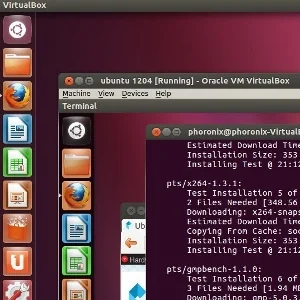A Lightweight QEMU-Free Linux KVM Host Tool

QEMU could be used with our without an accelerator with one of the original acceleration options being KQEMU, which was a Linux kernel module to speed-up x86 emulation and for a while was under a proprietary licensed and then opened up. KQEMU was unique in that it didn't require any particular virtualization extensions to be provided by the host CPU, but this technology is no longer supported in the latest QEMU releases.
Today, QEMU is able to take advantage of KVM (the Kernel-based Virtual Machine) for hardware virtualization on modern CPUs, where QEMU is now most widely used. QEMU+KVM can accelerate x86/x86_64, PowerPC, and S390 guests. QEMU components have also been integrated into VirtualBox, Xen-HVM, and WIn4Lin Pro Desktop.
While QEMU is open-source and a dominant component in the virtualization field, for those looking to take advantage of the Linux Kernel-based Virtual Machine without using QEMU, there's a new alternative. An alternative that's written from scratch and designed to be a clean, lightweight solution.
This new native Linux KVM tool was announced at the end of March and was written by Pekka Enberg, Cyrill Gorcunov, and Asias He.
In the Linux kernel mailing list announcement, "The goal of this tool is to provide a clean, from-scratch, lightweight KVM host tool implementation that can boot Linux guest images (just a hobby, won't be big and professional like QEMU) with no BIOS dependencies and with only the minimal amount of legacy device emulation." [For those that didn't notice the statement by Pekka Enberg, it mirrors Linus Torvalds original quote when announcing the Linux kernel back in 1991 if you replace the word "QEMU" with "GNU."]
This tool is still in development but is only around 5,000 lines of C code that is capable of booting a Linux guest image while leveraging the Linux KVM.
Pekka cites this mailing list thread as his reasons for beginning this project. The thread is regarding unifying KVM kernel-space and user-space code into a single project with comments by Ingo Molnar and others.
Add A Comment

